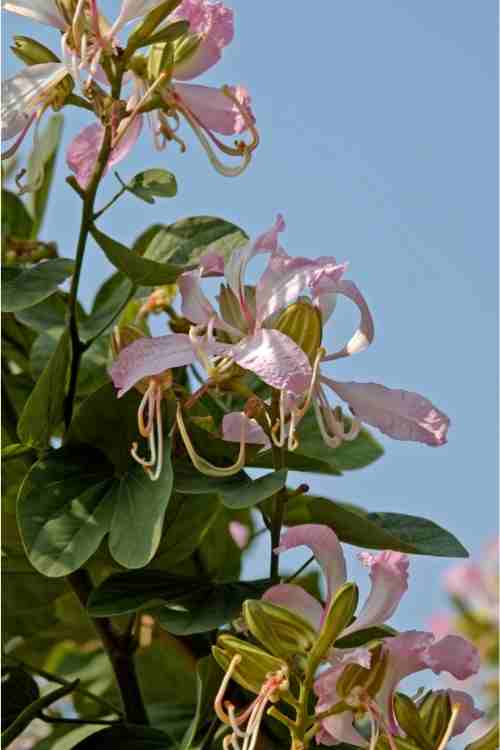
Table of Contents
Kanchanara Ayurvedic Herb
The bark of the Kanchanara tree is used in Ayurveda to treat many ailments, including tumours, hormonal fluctuations, and glandular enlargement. Kanchanara has also been used to treat coughs, sore throats, bleeding hemorrhoids, and diarrhea. Read on to learn more about this popular medicinal plant. You can also read more about its morphology. Here are some common uses and more.
Kanchanara plant in Ayurveda
The Kanchanara plant, commonly known as Camel’s foot, is a small tree with yellow, golden flowers. It is widely distributed in mountainous areas. Listed among the most widely used herbs in Ayurveda, Kanchanar is a versatile medicinal herb used for a variety of ailments. Its medicinal benefits span from treating kidney and respiratory problems to promoting healthy skin and hair.
The Kanchanara plant is botanically known as Bauhinia Variegata and is found in the forests of India and Burma. The stem bark is a useful ayurvedic remedy for various ailments, and is also taken internally as a decoction. In Ayurveda, the stem bark is used to treat conditions such as lymphadenitis and goiter. Other common names for Kanchana include Ashmantaka and Gandari. The plant grows to a height of 40 feet and is usually a medium-sized tree. It has showy flowers, a spathaceous limb, and dehiscent pods.
Guggulu, derived from the bark of the kachnar tree, is an ayurvedic medicine for many conditions. It helps regulate the function of the thyroid gland, relieves joint pains, and promotes the immune system. It also contains the compound Guggulu, which is the active ingredient in kanchanar Guggulu.
Morphology of Bauhinia Variegata
The Morphology of Bauhinia Varienta reveals its unique growth pattern, ranging from a low-growing small tree to a large deciduous tree. The Bauhinia family is comprised of around 600 species, and the Bauhinia variegata is a member of this family. This plant is commonly grown as an ornamental in tropical regions of Asia.
The Morphology of Bauhinia Varienta is classified as a “semi-deciduous tree with irregular crown and sparse branching”. Its leaves are light green and resemble those of butterflies, and its flowers are deep pink with five or six stamens. Both the species are sterile. Its leaves are also distinctive, and they differ from other Bauhinia species in several ways.
The morphological features of Bauhinia forficata differ significantly between species. Bauhinia variegata L. has a narrow venation and a pointed snout, which makes it an ideal ornamental plant. The venation of Bauhinia variegata differs from the venation of Bauhinia forficata. In the latter case, the leaf venation and veination are more prominent than in the former.
The stem bark of Bauhinia variegata Linn. was analyzed against the vector snail Lymnaea acuminata. Both plants were more toxic when ethanolic extracts were used. The ethanolic extract from B. variegata was 14.4 mg/L, while that of M. elengi had a 96-hour LC50 of 15.0 mg/L. The column purified fraction of B. variegata bark contained saponin, a molluscicidal compound.
Medicinal uses of Kanchanara Plant
Kanchanara is a well-known Ayurvedic herb that is commonly found in India. It has several medicinal properties, and is a key ingredient in the popular guggul known as Kanchnar. The plant is a deciduous tree with a grayish brown bark with irregular patches of darker color. It grows to a height of 4000 feet and is widely available throughout India. Medicinal uses of Kanchanara Plant include a variety of ailments, including cervical lymphadenitis, thyroid complications, and many others like skin disorders, excess inflammations in body, worm infestations, cough, Diabetes, Piles.
One of the most common ailments treated with kachnar is polycystic ovarian syndrome (PCOS), a hormonal disorder that results in irregular menstrual periods. Ayurvedic medicine, called kanchanar guggulu, is effective for treating this disorder. Other uses include regulating the menstrual cycle, helping women lose weight, and healing urinary tract infections. Additionally, it can be used to treat kidney stones and PCOS.
The Kanchanara tree has been used as a medicinal plant for thousands of years. Its leaves and bark have been used to treat scrofula, a condition where the Vata dosha is overactive, causing the person to have diarrhea. The bark is also used in soups for scrofula and menorrhagia.
